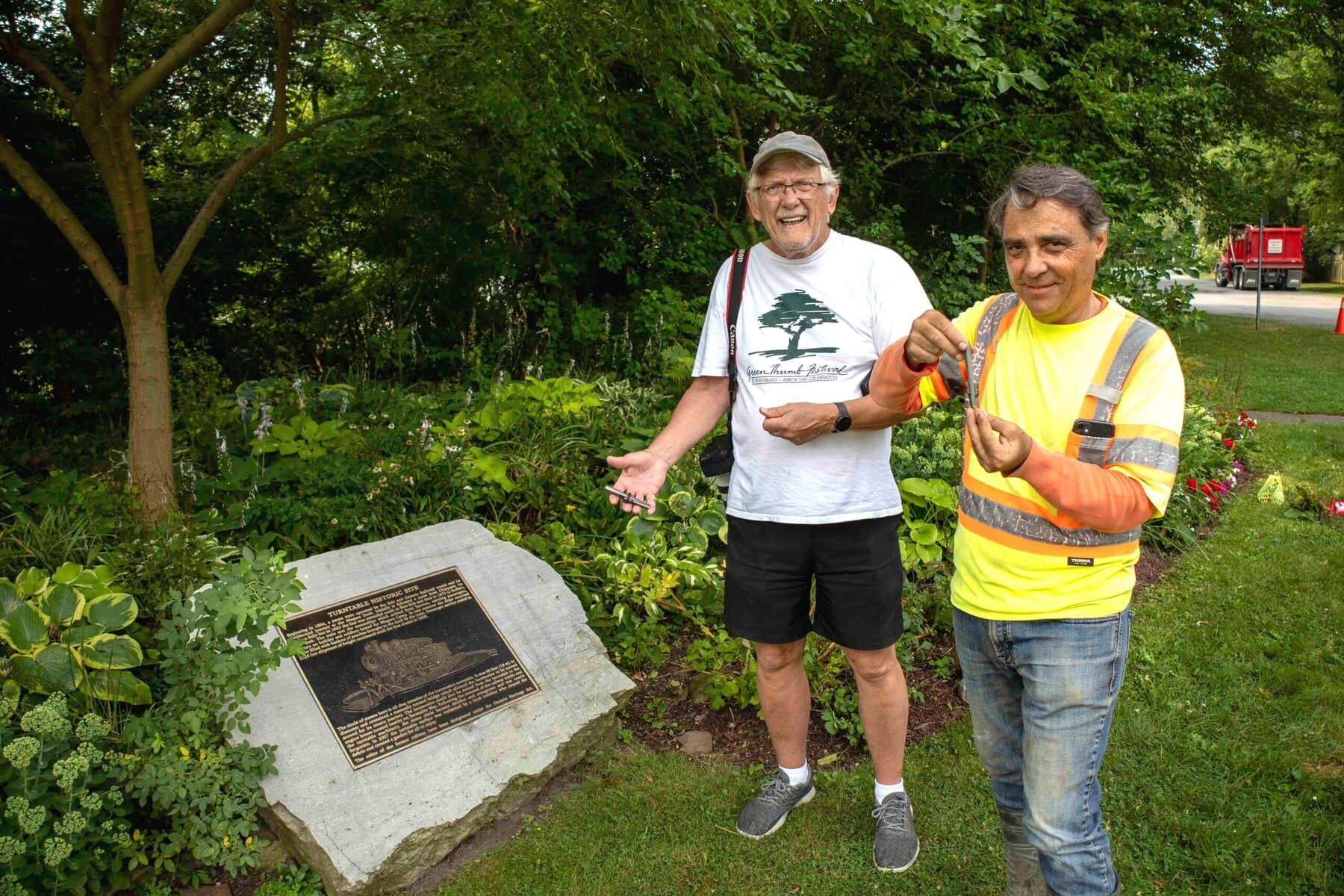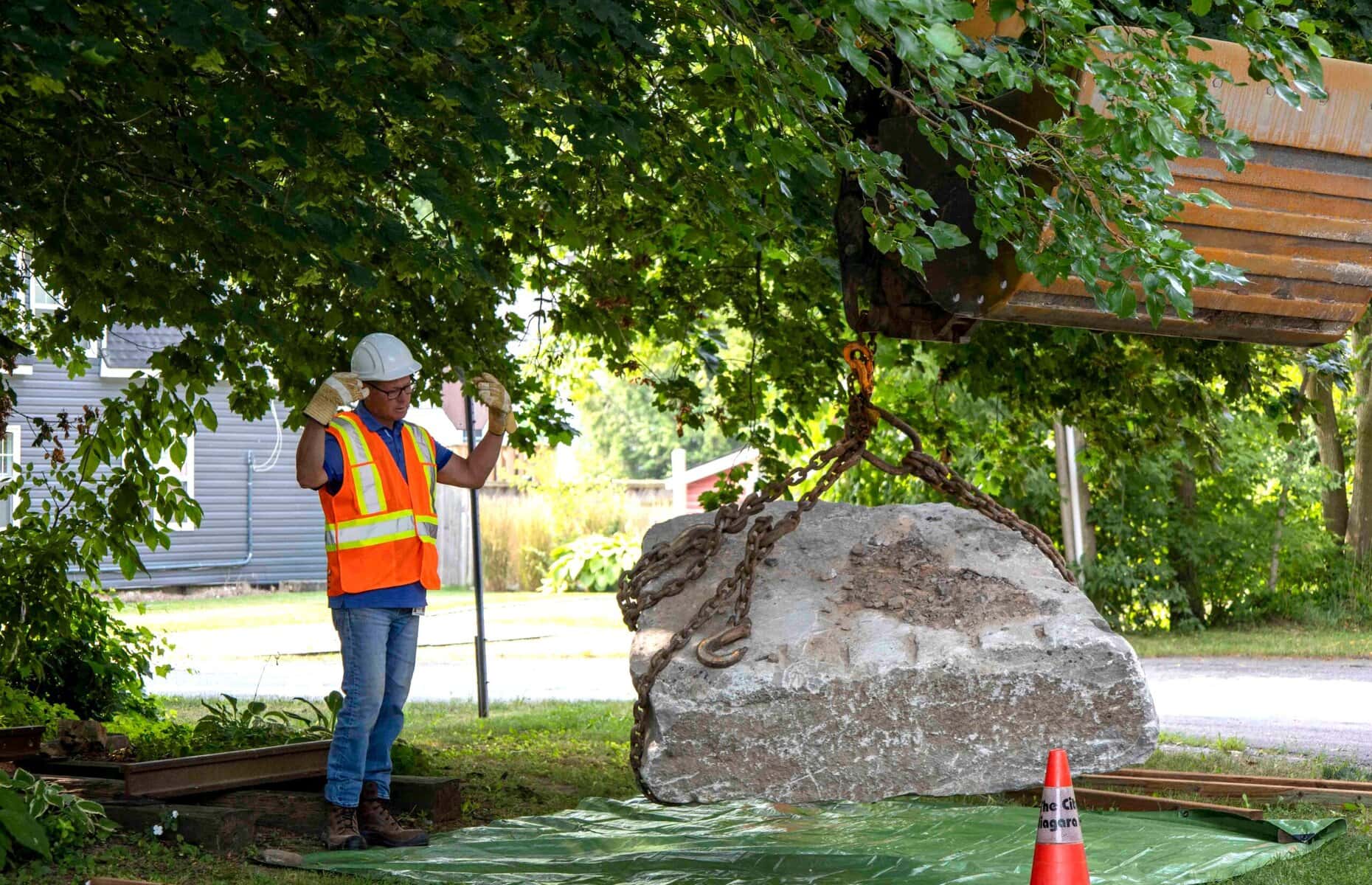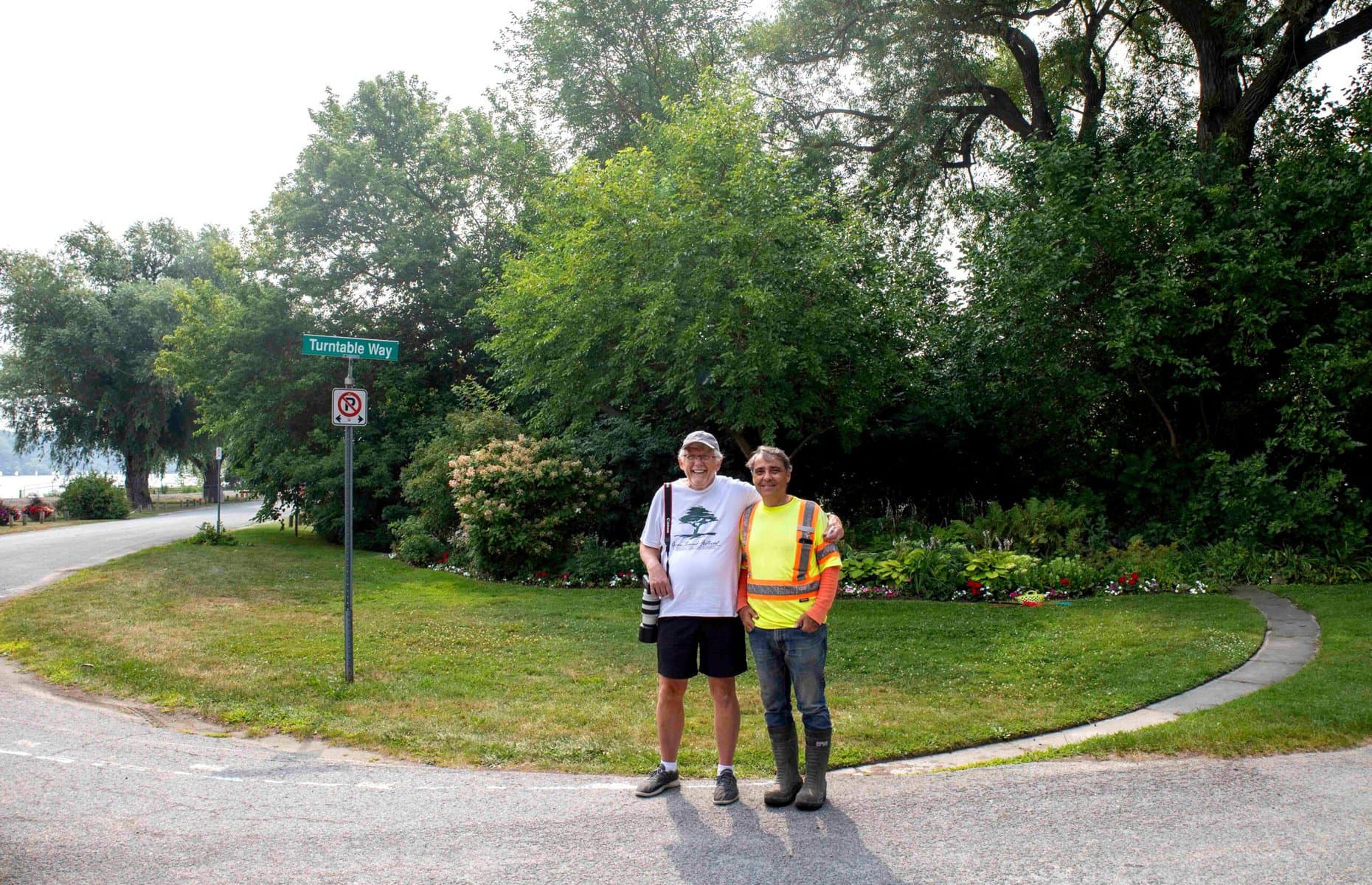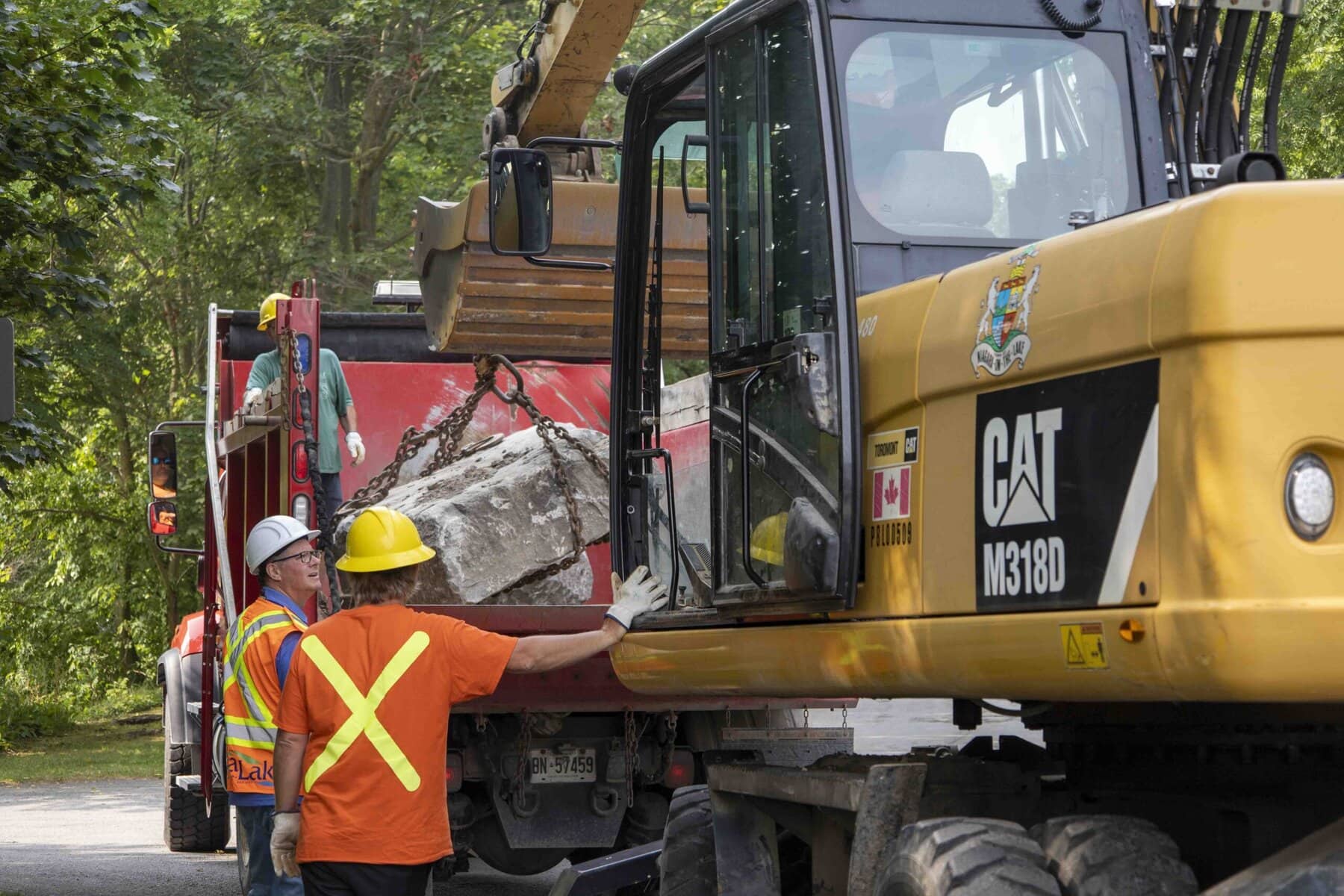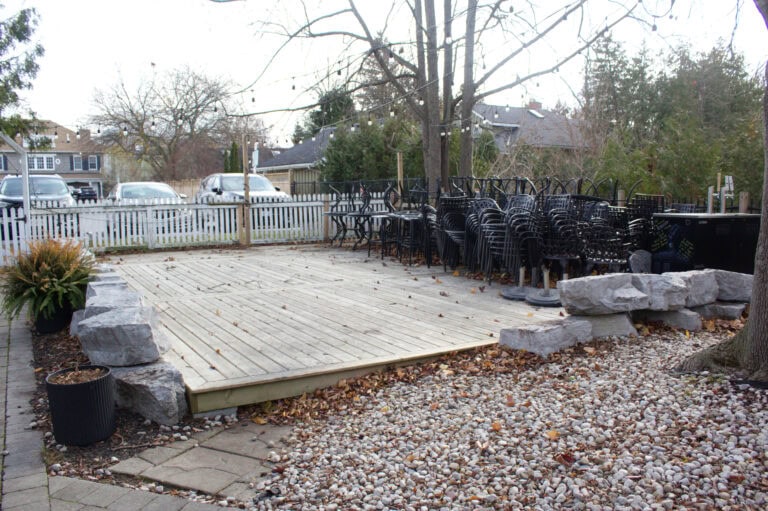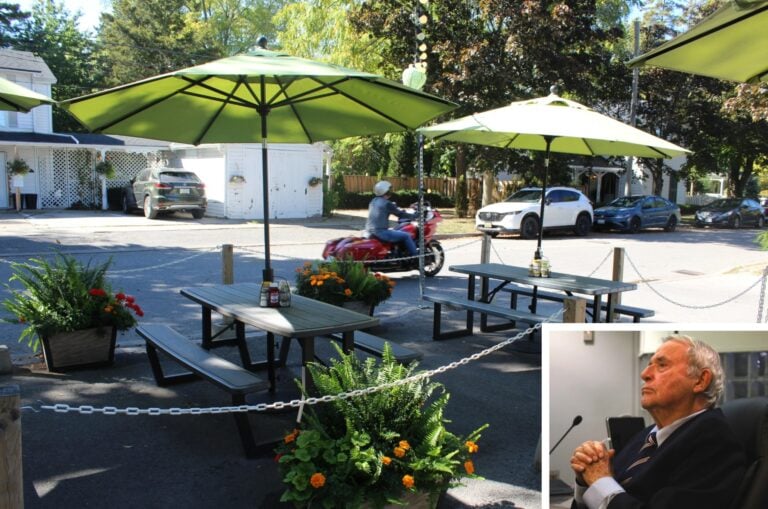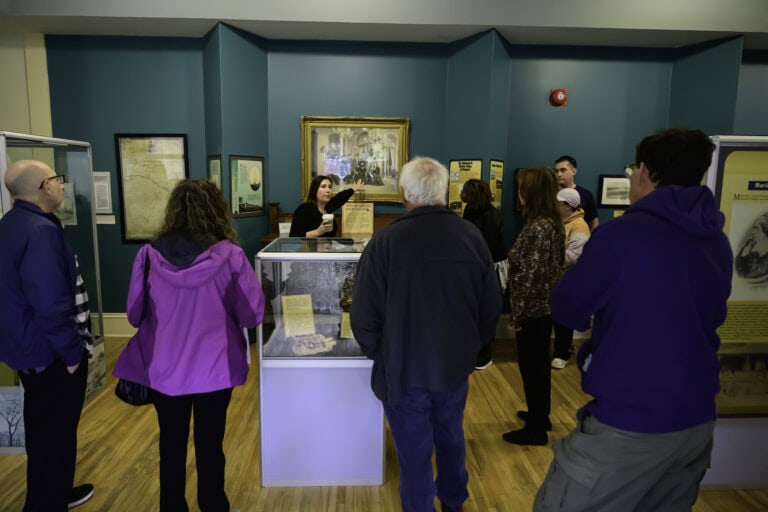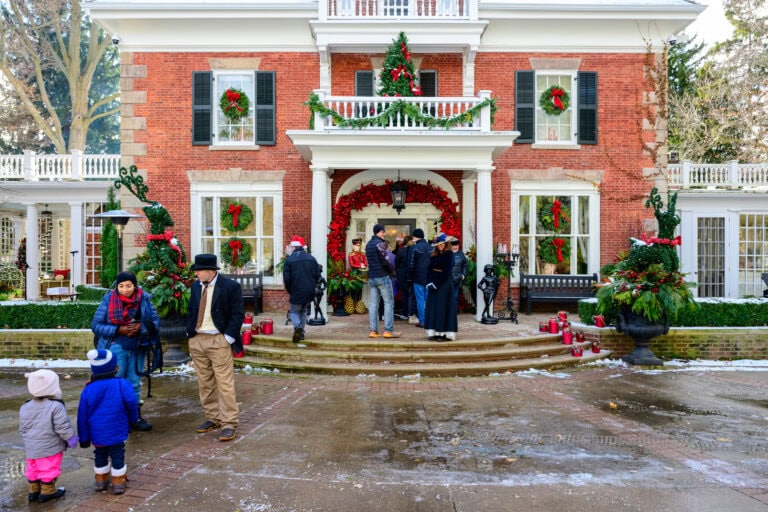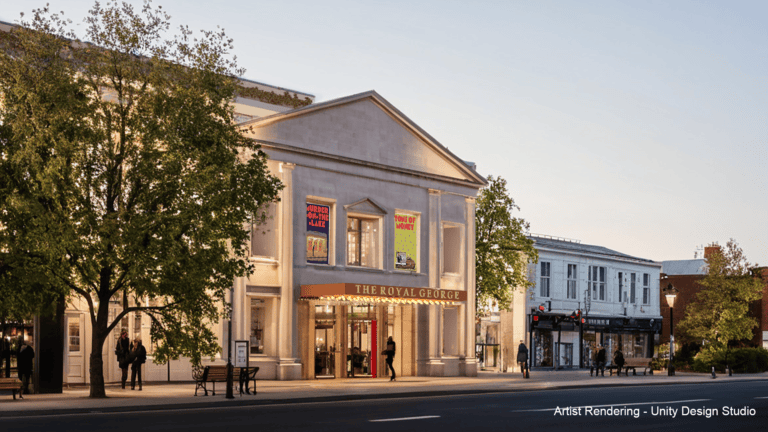Beginning in 1854, steam trains in Niagara-on-the-Lake were turned around by hand on a 60-foot-wide limestone ring near the waterfront.
Many don’t know the turntable is still partially there — or that a team is restoring it, stone by stone.
On Thursday, new blocks of Queenston limestone from the Queenston Quarry, where the originals were cut, were donated to the site at the intersection of Turntable Way and River Beach Drive.
“To get started, there’s two,” said Frank Racioppo, president of the Queenston Quarry Reclamation Company, who donated the stones.
“But the two there will probably produce three or four (stones).”
Ron Simkus, a director for the Niagara-on-the-Lake Residents Association, has been helping coordinate efforts to restore the turntable.
It was essentially halved in the early 1990s during sewer upgrades, when crews dug wide trenches without modern supports and tore up anything in their path.
Now, using stone that is cut, shaped and installed with the same technique employed in 1856 (feathers and wedges), Racioppo, Simkus, NOTL residents, town staff and Willowbank heritage students Meghan Rist and Malcolm Williams are working to revive the site.
The goal, Simkus said, is to complete the full circle by the end of 2026, once the remaining materials are sourced and decisions are made about how to safely integrate the stones with the roadway.
“Right now we’re still debating how the road’s going to work,” said Casey Sharpe, NOTL’s supervisor of roads.
“We’re going to have to redo the road itself.”
Sharpe will be working with his team to install the stones and rework the surrounding road — termed as a “special project,” he said, for the town’s 10-person crew, though only some will be assigned to it.
Essentially, Sharpe said, “The town’s role is just implementing and installing the rocks.”
“We are definitely not the experts in this.”
“We’re always willing to take on new projects,” he said, to “stretch the limits of what we can do.”
Sharpe said some original stones may still be scattered across town property, but Simkus said the group has seven stones salvaged from the town’s “boneyard” in 2016.
“We need to cut and install approximately 13 more stones, four feet long each, to complete the missing 27 per cent that would outline the intersection,” said Simkus, who has long pushed for its restoration.
If three come from this donation, 10 more will need to be sourced.
“When you add them all up, we’re talking, you know, 20, 25 tons of stone, so it’s a big ask for these guys,” he said.
“The ones that are in the ground are about 200 years old.”
It’s not yet clear, Racioppo said, whether the quarry will donate the remaining stones or supply them at cost.
That decision will depend on how much usable material the first blocks produce.
“For the most part (the limestone) is exhausted,” he said, but there’s plenty available for heritage restoration — at least for Canada’s needs.
“(We’ll) soon be unveiling, kind of, the plan for the Queenston quarry,” said Racioppo.
“But in the meantime, because it’s such an important prized stone, it’s completely appropriate to utilize it in heritage restoration projects.”
“I compliment town staff and council for allowing this,” he said. “It’s a big undertaking.”
Sharpe said all new stone must come from the original quarry.
“They’ve donated a couple of stones on their behalf, which really just brings the whole public and the whole idea of everybody working together to complete this project,” he said.
The town is supporting the project because of its historical significance, he said — it’s been on the community’s radar for decades.
“This is an amazing part of history,” he said.
The crew is not only looking forward to the project — it’s also a valuable learning experience, he said.
“The guys work well together; they enjoy that group mentality of a team effort.”
Something that makes the design more complicated, though, Sharpe said, is road maintenance — “snow plowing, anything like that” — but Simkus said he’s committed to working with the town and respecting its requirements.
Simkus said the original promise to rebuild the turntable dates back to 1991.
“The town installed extensive underground infrastructure in the dock area for potable water, sanitary sewer lines and stormwater management,” he said.
“At that time, a commitment to residents was made that the excavated stones would be salvaged and eventually the ring would be reinstalled.”
“That didn’t happen,” said Simkus.
Nearby resident Pat Hartman, who planted a garden at the site, said the return of the stones makes the story more real, helping visitors and locals visualize what actually took place there.
“This is great,” she said. “There is a story on the plaque that Ron has put in, but the additional stones will make people (go), ‘Oh really, they really turned the train around here.’”
One of the donated stones at the site holds a plaque, installed by Simkus, to share its history.
Sharpe agreed with Hartman.
“Niagara-on-the-Lake is entirely based on history, and this just opens up this area for more residents, more visitors come down.”



